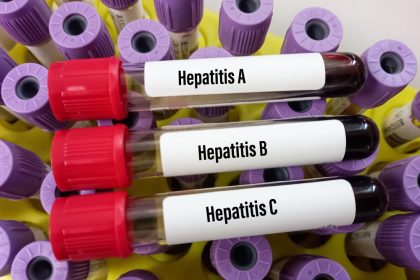The final stages of Alzheimer’s disease represent one of the most challenging periods for families watching their loved ones navigate this devastating condition. Understanding the critical signs that indicate progression into the end stages can help families prepare emotionally, practically, and spiritually for the journey ahead. These signs often develop gradually over months or years, though the timeline varies significantly for each individual.
During the final progression of Alzheimer’s, the brain‘s ability to control basic bodily functions becomes severely compromised. The areas responsible for memory, language, reasoning, and physical coordination have sustained extensive damage, leading to profound changes in how the person interacts with their environment and loved ones.
While each person’s experience with Alzheimer’s is unique, certain patterns emerge that can help families recognize when their loved one is entering the final stages. Being aware of these signs allows families to make informed decisions about care, create meaningful moments, and ensure their loved one receives appropriate comfort and support.
1. Severe communication breakdown occurs
The ability to communicate effectively becomes extremely limited as Alzheimer‘s progresses to its final stages. Words may become unintelligible or disappear entirely, leaving family members struggling to understand their loved one’s needs and emotions. This communication breakdown often represents one of the most heartbreaking aspects of the disease’s progression.
Speech patterns may become repetitive, with the person saying the same words or phrases over and over. Some individuals may revert to speaking in their native language if English was learned later in life. Others may communicate primarily through sounds, gestures, or facial expressions rather than words.
The person may lose the ability to recognize familiar faces, including immediate family members. They might treat loved ones as strangers or become confused about relationships and family dynamics. This loss of recognition can be devastating for families who have provided care and support throughout the disease progression.
Reading comprehension disappears entirely, and the person can no longer follow written instructions or understand signs. Television shows, books, and other forms of media that once provided comfort may no longer hold meaning or interest.
2. Physical mobility becomes severely compromised
Walking becomes increasingly difficult and eventually impossible as the disease affects the brain’s ability to control muscle movement and coordination. The person may shuffle when walking, have difficulty maintaining balance, or require assistance to move from one location to another.
Muscle rigidity often develops, making movement painful and uncomfortable. Arms and legs may become stiff, and the person may assume a fixed posture. This rigidity can make it challenging to provide personal care and may require specialized positioning and support.
Fine motor skills deteriorate significantly, making activities like buttoning clothes, using utensils, or manipulating small objects impossible. The person may lose the ability to write, draw, or perform any tasks requiring hand-eye coordination.
Eventually, the person becomes bedridden and requires assistance with all positioning and movement. They may need help turning over in bed, sitting up, or changing positions to prevent pressure sores and maintain comfort.
3. Eating and swallowing difficulties emerge
The ability to chew and swallow food safely becomes compromised as the brain loses control over these complex functions. This creates significant challenges for maintaining proper nutrition and hydration while avoiding dangerous complications like choking or aspiration pneumonia.
The person may forget how to chew food properly, holding it in their mouth without swallowing. They might spit out food or refuse to eat entirely, making it difficult to maintain adequate caloric intake. Some individuals may only accept certain textures or temperatures of food.
Swallowing liquids becomes particularly dangerous as the person loses the ability to coordinate the muscles involved in this process. Thin liquids like water may be aspirated into the lungs, leading to serious respiratory complications. Thickened liquids and modified food textures may become necessary.
Weight loss often becomes significant and concerning during this stage. The combination of reduced food intake, difficulty swallowing, and the body’s increased metabolic demands can lead to rapid weight loss and nutritional deficiencies.
4. Incontinence becomes complete and constant
Bladder and bowel control disappear entirely as the brain’s ability to recognize and respond to these bodily functions is lost. The person may not realize when they need to use the bathroom or may be unable to communicate this need to caregivers.
Urinary tract infections become more common due to incomplete bladder emptying and the challenges of maintaining proper hygiene. These infections can cause additional confusion, agitation, and discomfort for the person with Alzheimer’s.
Bowel movements may become irregular, with constipation being a common problem. The person may not be able to assume proper positioning for bowel movements or may not understand instructions from caregivers about using the toilet.
Complete dependence on caregivers for toileting needs becomes necessary. This requires regular scheduled toileting attempts, proper hygiene care, and the use of protective garments to maintain dignity and comfort.
5. Sleep patterns become severely disrupted
The normal sleep-wake cycle becomes completely disrupted as Alzheimer’s affects the brain’s ability to regulate circadian rhythms. The person may sleep for most of the day and become restless or agitated at night, a phenomenon commonly experienced in advanced dementia.
Extended periods of sleep may be interrupted by brief moments of wakefulness, but these periods often involve confusion, disorientation, and distress. The person may not recognize their surroundings or understand why they are in bed.
Restless behaviors during sleep become common, including repetitive movements, calling out, or attempting to get out of bed. These behaviors can be disruptive to both the person with Alzheimer’s and their caregivers, requiring careful management to ensure safety.
The quality of sleep deteriorates significantly, with less time spent in deep, restorative sleep phases. This can contribute to increased confusion, agitation, and physical decline during waking hours.
Understanding the timeline and seeking support
The progression through these final stages typically occurs over a period of months to years, though the timeline varies greatly among individuals. Some people may experience a gradual decline over several years, while others may progress more rapidly through these stages.
Families should understand that these changes are part of the natural progression of the disease and not a reflection of inadequate care or love. The person with Alzheimer’s is not choosing these behaviors or changes – they are the result of significant brain damage that affects all aspects of functioning.
Professional medical care becomes essential during this stage to manage symptoms, prevent complications, and ensure comfort. Healthcare providers can offer guidance on nutrition, infection prevention, pain management, and other aspects of care that become increasingly complex.
The focus of care during this stage shifts from attempting to maintain previous abilities to providing comfort, dignity, and emotional support. Creating a peaceful environment, maintaining familiar routines when possible, and ensuring the person feels loved and supported become the primary goals.


















